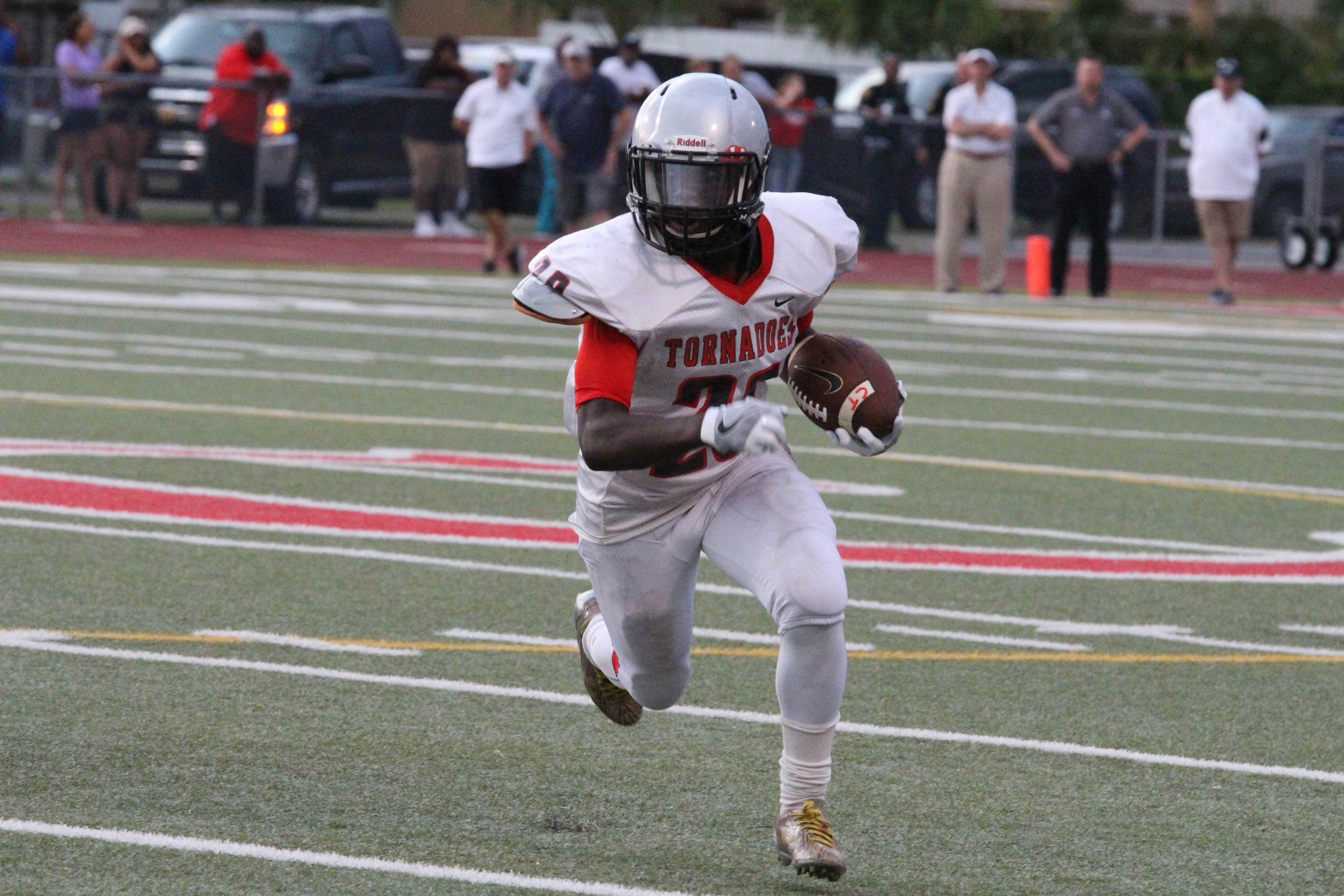
Offenses have become more complex over the years. Schemes have become more detailed and dynamic. The hybrid athlete has becoming more popular and in greater demand. It’s the current wave of the game and a player who can “Do More” will play more.
Today we examine the emerging role of the running back as a receiver. The traditional role of the running back has not diminished. They still have to run the ball inside and outside the tackles and pass protect for the quarterback. Great backs have excellent instinct, great vision and the ability to avoid tacklers or run through them. RBs are also involved in the passing game more now than ever before.
At the conclusion of the 2016 Florida High School football season 3 of the top 50 players (receiving yards) in the state were listed as running backs (Maxpreps.com). Gulf Breeve RB Tristian Covell had the 11th most receiving yards in the state (1078) on 69 catches and recorded 11 receiving TDs. Seth Johnson from St. Cloud and Tre Preston both had 30 or more catches and 800 + receiving yards. 13 listed running backs in the state had 500 or more receiving yards and 20 or more catches in 2016.
Former NFL running back and private running back coach Arlen Harris weighed in on the importance of a running back being able to evolve as the responsibilities at the position have done the same. “Spreading out a defense laterally by formation, stretching the field vertical by routes, then speeding up the game by not huddling & running RPOs, the identity at the RB position has changed completely. It’s evolved into a RB by committee mentality to keep fresh legs and to become more of a threat outside the tackles whether lined up in or out the backfield.”
Last season in the American Athletic Conference, seven running backs were listed in the top 50 in receiving yards per game. Temple’s Jahad Thomas caught 33 passes for 418 yards averaging 34.8 yards per game and added 6 receiving TDs. “The TE has even morphed into taking over the responsibilities of the traditional fullback.” Harris added. “The RB isn’t expected to run downhill 20+ times inside the tackles. When the ball went in the air we blocked. There is a blurred line of backs who can be just affective at the receiver spot but they are called ‘athletes’ now. At the end of the day evolution has forced players to be COMPLETE backs.”
Let’s examine the Power 5 conferences in 2016. Below is list of each conference and how many running backs ranked in the top 50 in receiving yards per game
ACC – 4
Big 12 – 3
Big 10 – 3
Pac 12 – 5
SEC – 1
Former FSU running back and current Minnesota Vikings running back Dalvin Cook had a pair of the best hands in the ACC last season. Cook caught 33 passes for 488 yards and was not even the top back (receiving yards per game) in the conference. Nyheim Hines, NC State averaged 43.8 yards per game and caught a total of 43 passes. To put it in perspective, Clemson WR Deon Cain averaged 48.3 yards per game which placed him at 23rd in the conference.
Coach Harris breaks down why there is such an emphasis on RBs being a receiving threat “The emphasis has increased on RBs being a receiving threat because stretching out defenses has become a numbers game. The more of a threat you are receiving then a defense can’t be content or comfortable with leaving a linebacker in coverage. So now personnel has to change. It also gives another option for QBs in their progression instead of just being the safety net by running a check down route”
9 RBs in the Power 5 conferences caught 30 or more passes last season. 6 RBs in the Power 5 conferences caught 40 or more passes. In the Pac 12 Kalen Ballage (Arizona State), Jamal Morrow (Washington State) and Phillip Lindsey (Colorado State) all averaged 35 or more receiving yards per game and caught 44 or more passes. Over in the Big 12 three RBs ranked in the top 50 in receiving yards per game led by current NFL RB Joe Mixon. Mixon was responsible for 538 receiving yards, 37 catches and averaged 44.8 yards a game.
As Coach Harris said “At the end of the day evolution has forced players to be COMPLETE backs.” It is a trickle down effect based on how NFL and college schemes have evolved. Personnel dictates what an offense can and can not do. So a running back with receiving ability provides endless option of offensive coordinators.
